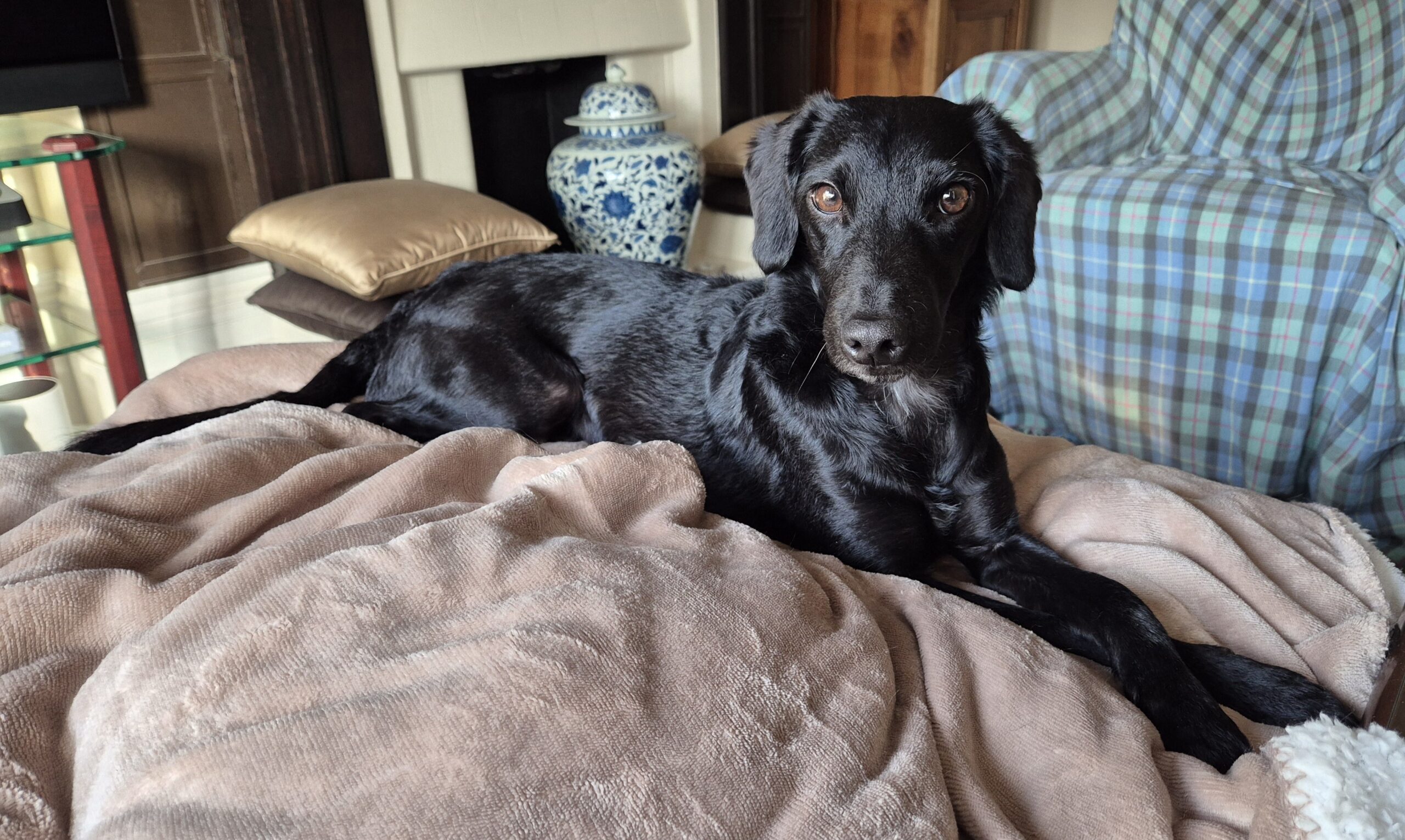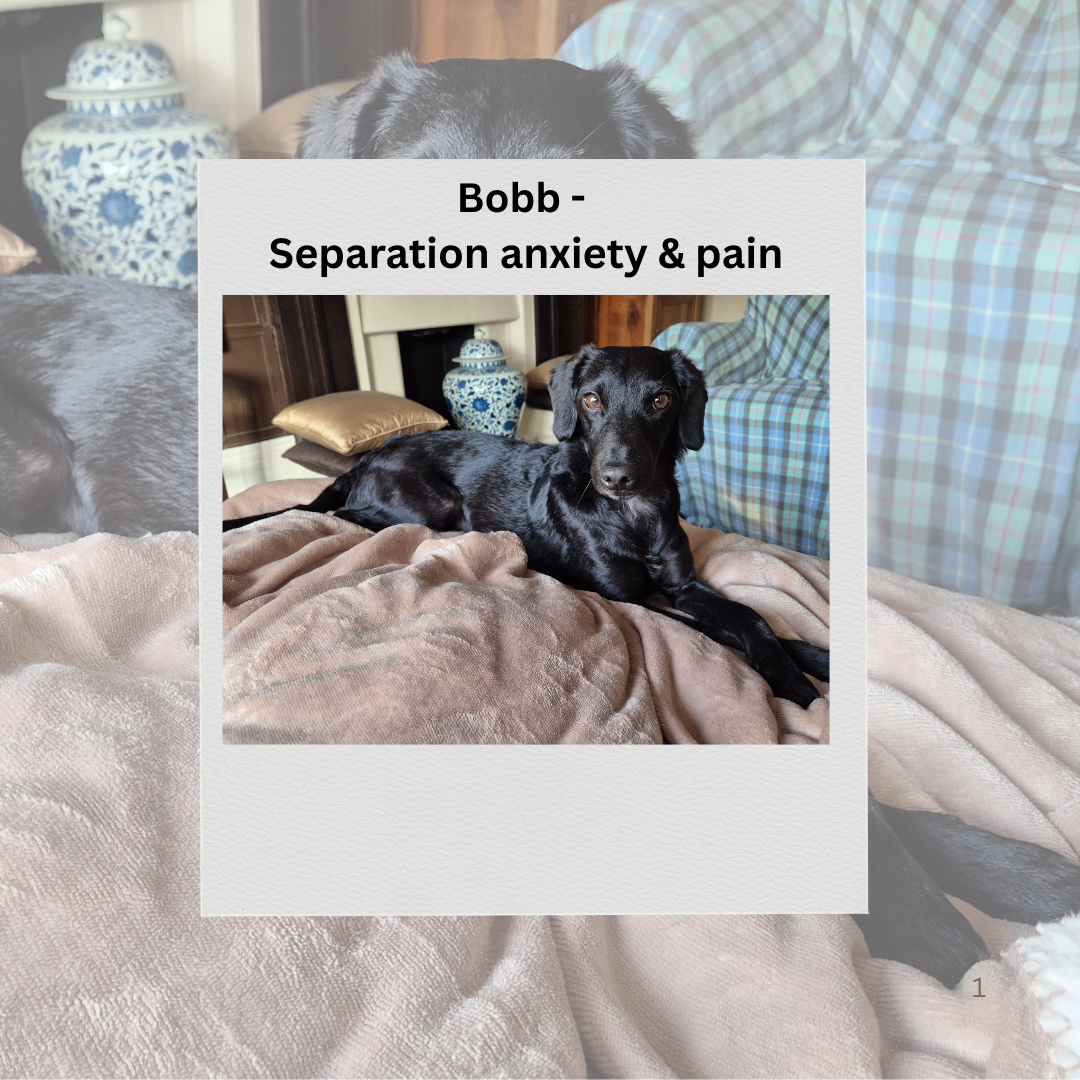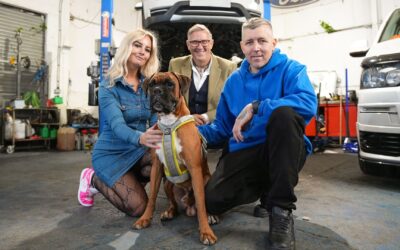This is lovely little Bobb – one of my wonderful separation anxiety clients. Isn’t he sweet! Bobb is a 2.5 year old rescue cross breed, who came to live with his absolutely brilliant mum at just over 1 year of age

I started working with Bobb on his separation anxiety at the beginning of March 2025. Bobb was described as being very active and eager to learn, with them having attended training classes and Hoopers, and Bobb picking up skills very quickly. We worked together for 4 weeks, and are now taking a break due to what you will read about further down this page, but what is significant is during these 4 weeks, nothing much changed in his separation related behaviours. While it is very unusual to achieve dramatic improvements in a dogs comfort level when home alone in as short a period as 4 weeks, we do expect to see some improvements, and when there is not, that is another red flag for me.
Red flags
In my pre-assessment questionnaire that I send to clients when we start working together (which is VERY long and extensive!), a few “red flags” came up with some of the answers – Bobb cried when travelling in the car, being hesitant to jump in; he struggled to settle anywhere apart from the home; he started barking at other dogs about 4 months prior, but this is not consistent; he did not like being bathed or dried. Now there could well be other motivating factors for these behaviours, but they could be pain related, and when I start working with clients I am looking at absolutely everything – I never look at the separation related behaviours alone.
During one of our first LIVE weekly reassessment at the beginning of our programme I noticed some abnormalities with Bobb’s posture – specifically his hind end. I raised this with Bobb’s very lovely and dedicated owner, who then put a rush on the videos and photos I had requested following our assessment for me (which I very much appreciated!). It then became evident to me, when assessing this visual evidence, that there were some postural and gait abnormalities that warranted further investigation from the vet. I therefore compiled my thorough Dynamic Dog report, complete with photographic and video evidence marked up with my observations, and sent it to Bobb’s Vet, who then was very thorough, saw Bobb for an examination and referred him to a specialist for a CT scan.
Why I assess ALL clients dogs for signs of pain – no exceptions
As a Dynamic Dog Practitioner I assess each and every dog I work with for potential signs of pain and discomfort by conducting a very thorough functional assessment via videos and photos I request from the owners. We MUST all be aware that dogs show pain in very different ways to humans – a very high percentage of dogs I work with end up having an underlying medical/musculoskeletal condition diagnosed, and these dogs have all had a check up at the vet. But – very often signs of pain are shown in other ways that will not be noticeable during a vet consult, and with every dog that IS sadly diagnosed with something, their owners always express surprise because they are active, running round, not limping, and “seem fine”. If these undiagnosed conditions were NOT found, then the dogs would be very unlikely to be able to progress on ANY behaviour modification plan, not just a separation anxiety protocol.
Remember dogs need to feel safe and comfortable in order to learn, and being in pain takes an awful lot of mental capacity. Once pain is identified, and managed, not only is that dog able to feel comfortable and safer, but some mental space is freed up to be able to cope with stressors such as being alone, and therefore they are more able to learn that alone time is safe.
So sadly just because your dog has had a quick check by the vet, or they “look fine”, it doesn’t mean there isn’t something going on.
What was found?
While Bobb’s mum is, at the time of writing, currently waiting for the report from the specialist which will have all findings documented in detail, she told me that from memory (as I think we can all appreciate how hard it is to take in a plethora of information from veterinary or medical professionals during times of stress!) she was told at least 3 areas were found of significance. Bobb was found to have hip dysplasia, a damaged disc showing calcification and compression of the nerve (so likely sciatica is being experienced), and there is an area in the junction between his neck and chest where the gap between bones is larger than is usual. All of these conditions will be painful. It starts to show you HOW much dogs cope with silently.
The veterinary specialist is conferring with a colleague to ascertain the best route forward and treatment plan for Bobb, but he is in the best hands and I am so glad that these have been identified so they can be managed.
Although this is obviously a big shock for Bobb’s mum, and she had hoped that not much would be found, now that things have been found we are one step closer to a more comfortable Bobb, and when pain is managed we may find the separation related behaviours resolve on their own, or will be a lot easier to work through. She said:-
“I am so grateful you conducted his gait and posture analysis, this is another example to give to your clients as to why the photos and videos are so valuable.”
So if your dog has separation anxiety, or is struggling with other behaviours, please ensure that if you work with a professional that DO look at the pain element. The majority of dogs I work with DO end up having an undiagnosed condition impacting their behaviour, and while dogs hide pain incredibly well, it doesn’t mean we don’t need to make more of an effort to read their language and understand what they are indirectly telling us via their posture, gait and how they perform daily activities.
If you would like help working through your dog’s separation anxiety, or have concerns your dog may be in pain and would like to organise a Dynamic Dog assessment, please get in touch! If you complete the form on the page linked below, I will be in touch to arrange an initial call to have a chat: Remote Online Separation Anxiety Dog Training (politepawsdogtraining.co.uk)




